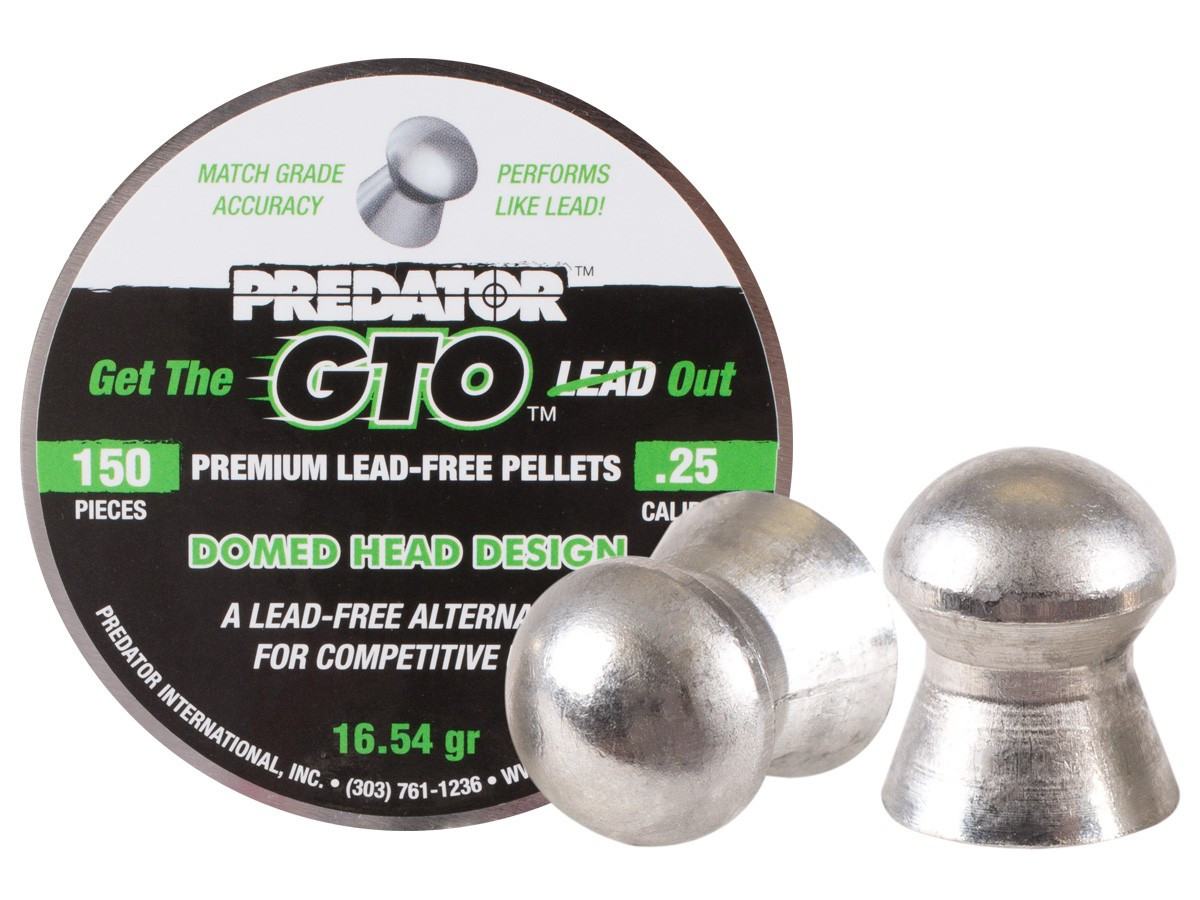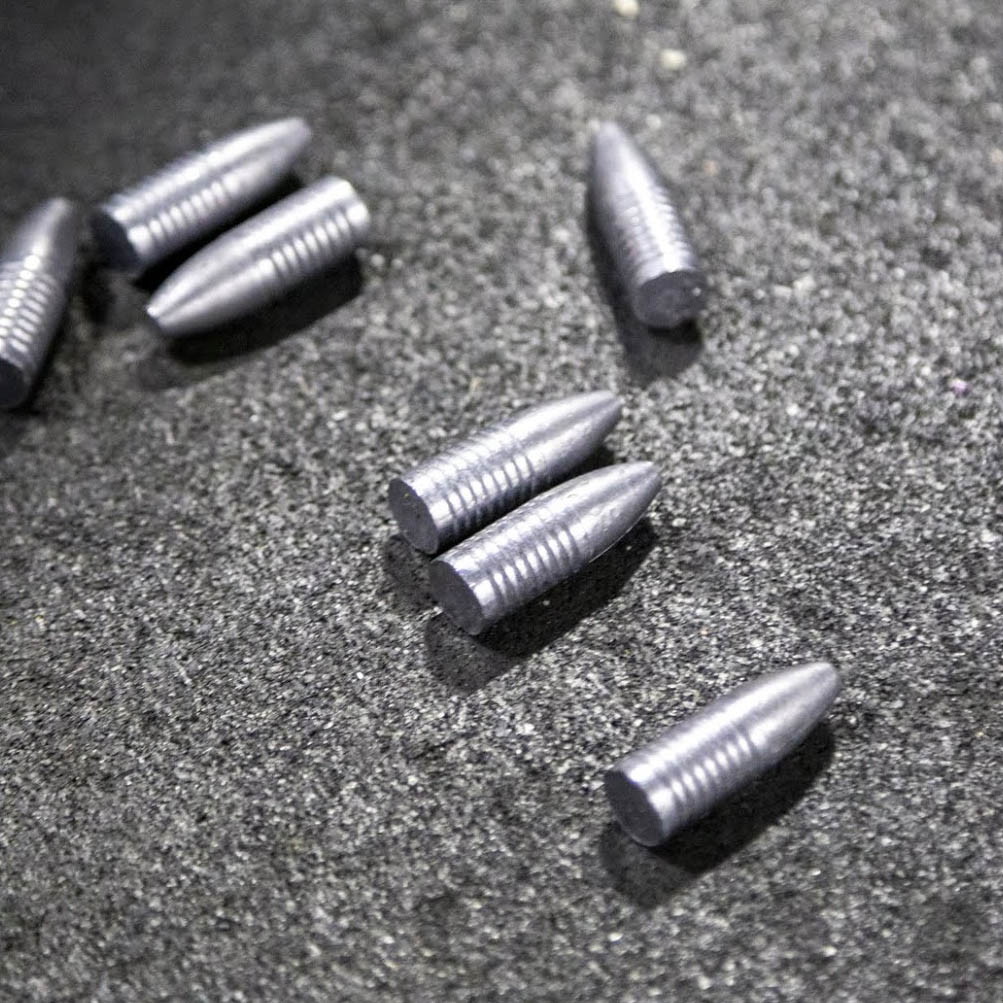With new airgun innovation, it only makes sense that we are seeing serious advancements in pellet technology and other ammo. Back in the day, airgunners had the choice of soft lead or hard lead, and maybe a handful of pellet shapes and weights. That is certainly NOT the case today. In this article, we’ll explore just some of these new options available to modern airgunners.
Lead-Free Airgun Ammo
The main reason most airgun ammo is made from lead is that it just works. It’s affordable, easy to work with from a manufacturing perspective, and again, it just works. But in the past several years there has been a concerted effort to ban lead ammo. This posed a real problem, especially for young shooters trying to compete in both scholastic and extracurricular shooting programs.
Enter the GTO pellet.

It was the first really viable alternative to competition lead pellets and was able to go toe to toe with its lead rivals on the firing line when it came to accuracy and consistency. Opening the door to a whole new genre of eco-friendly airgun ammo.
Lead-free pellets are exactly that, lead-free. The difficulty in the past had always been finding the right alloy that would have the weight and hardness to be accurate. Additionally, it needed to be easy to work with for mass production. Predator Pellets, along with JSB Pellets, cracked this nut several years back, and they have been on the development fast track with competition class, lead-free options ever since. In fact they’ve left all the other pellet makers in the dust, while creating an entire line of domed pellets in .177, .22, and .25 calibers.
These pellets are not accurate “for lead pellets”, they are just plain accurate. Possibly not ideal for hunting at long range because they are lighter than lead, they are fast to target and often have the same results at 50 yards as their lead counterparts.
In 2020 Predator International, (more on them shortly), also released their new GTO slug. At the time of this article we have yet to do any field testing, but you can bet they are going to be awesome if their success with the GTO line stays the same course. With a very high ballistic coefficient and hollow point, these new GTO slugs may finally give airgun hunters the ammo they need in areas where lead had been banned. We can’t wait to get our hands on these new GTO slugs!
Moving Beyond Pellets
The move away from pellets has been growing. Why? The main reason is that shooters want more: more range, more accuracy, more energy on target, more performance that is more like a firearm than your traditional airgun, etc. You can’t get that from pellets because physics simply won’t allow it.
Pellets create a lot of drag due to the skirt which bleeds velocity and energy very quickly. Generally speaking, 100 yards is about the max accurate range of any “normal” airgun using a quality lead domed pellet. The solution is to shoot slugs with a much higher ballistic coefficient, i.e. less drag. Easy right? One would think so, but it actually brings us to another problem, and it’s a big one.
Airguns, at least for the last several decades, have all been created specifically to shoot skirted pellets. This means their barrels are specifically “choked” by the manufacturer to stabilize the pellets as they exit the airgun. This is great for pellets…not so great for slugs.

Now there have been boutique airgun bullet makers creating custom small-bore slug ammo for some time, but it’s been expensive, sometimes hard to find, and not always reliable. However, both JSB and H&N, the two MAJOR pellet makers in the world, have both announced the arrival of airgun slugs that work without the need to convert your airgun into a “slug” gun. What does this mean for today’s airgunner?
The answer has actually yet to be written. There are some great advantages to shooting slugs over pellets IF you are looking for long-range precision shooting or hunting. They are much heavier and in the right airgun can have lethal range out to past 1/4 mile while still being accurate, and the reduced drag means shooters can enjoy a much flatter trajectory.
But while all those look great on paper, some airgun slugs start throwing red flags as well.
All of a sudden your typical airgun ammo that’s out of energy at 100, maybe 150 yards, is now carrying lethal energy out to 500 yards and maybe longer? The level of responsibility just went WAY up. Hunting or shooting in more urban environments just became more like shooting a .22LR in your back yard vs a quiet and neighborhood friendly airgun.
The bottom line is that we should all be extremely respectful of the damage and harm ANY airgun could cause. Slugs just extend that range way past the typical backyard and basement which needs to be in every airgunner’s thought process. Fortunately, with the new move allowing airguns to run either pellets or slugs in the same barrel, shooters can just pick the right ammo for the job.
Having fun in the back yard or just shooting targets from 50 to 75 yards? You may find pellets are more affordable and more accurate than slugs.
Need to stretch things WAY out past 100 yards? That’s when slugs become your best friend.
So when you are looking at all the cool options in airgun ammo hitting the shelves, don’t be afraid to ask for some advice and get some help so that you are picking the right ammo for the job, at the same time keeping this sport fun, accessible and safe. Need help? You know where to find it! Right here at Airgun Depot, just reach out. We are here to help!